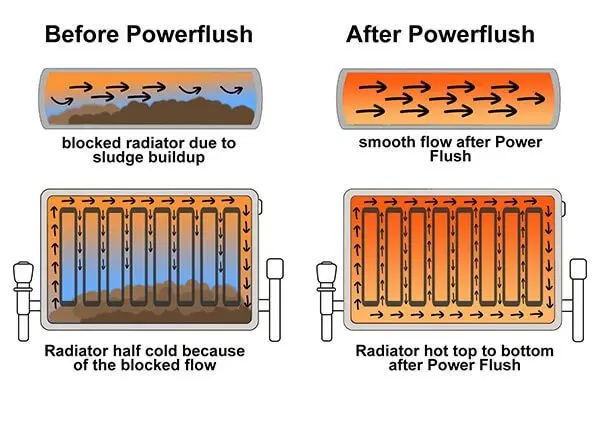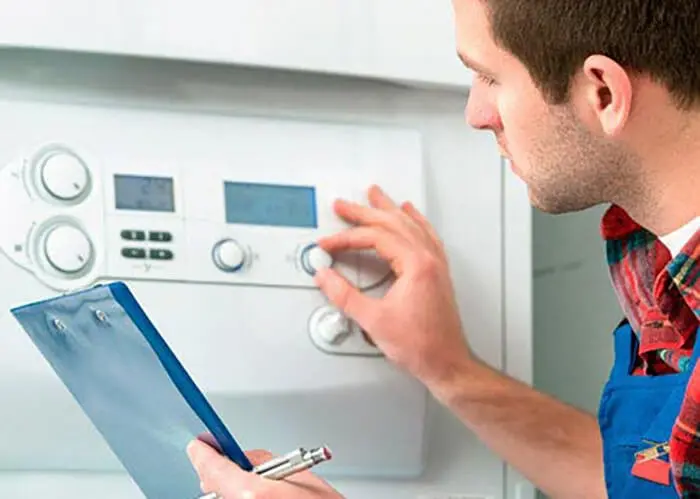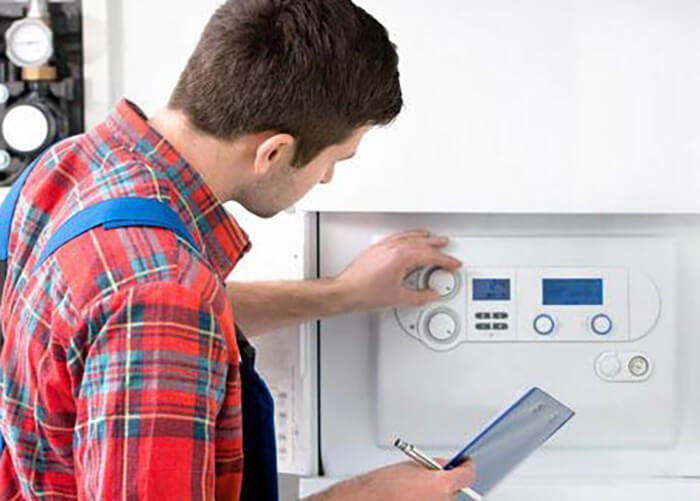How to reduce your heating bills in 2023
Heating costs can be a significant expense for many households, especially during the colder months of the year. However, there are several steps that you can take to reduce your heating costs and make your home more energy-efficient. In this Blog, we will discuss some practical tips and strategies for saving heating costs, including:

Update boiler and heating components

The first step in saving heating costs is to update your boiler and heating controls. A modern, energy-efficient boiler can significantly reduce your heating costs, as it will use less energy to heat your home. Additionally, upgrading your heating controls, such as thermostats, can help you to better regulate the temperature in your home, which can also help to save energy and reduce costs.
When it comes to updating your boiler, there are several options available. For example, you can replace your old, inefficient boiler with a new, high-efficiency model. These boilers are designed to use less energy to heat your home, which can help to reduce your energy bills. Additionally, many new boilers come with advanced features, such as weather-compensation controls and smart home integration, which can help to further reduce your heating costs.
Another option for updating your boiler is to install a condensing boiler. Condensing boilers are more energy-efficient than traditional boilers, as they use the heat that is normally wasted to preheat the cold water that enters the boiler. This means that they can use less energy to heat your home, which can help to reduce your energy bills.
When it comes to updating your heating controls, there are several options available as well. For example, you can install a programmable thermostat, which allows you to program the temperature in your home for different times of the day. This means that you can lower the temperature in your home when you are not there, which can help to reduce your heating costs. Additionally, many modern thermostats come with advanced features, such as smart home integration, which allows you to control your heating from your smartphone or tablet.
Flush radiator and clean system

Another important step in saving heating costs is to clean your radiator system. Over time, radiators can become clogged with dust and debris, which can reduce their efficiency and increase your heating costs. Regularly cleaning your radiators can help to improve their performance and reduce your energy bills.
Power flush is a process of cleaning and flushing the central heating system in order to remove any dirt and debris that may have accumulated over time. This can include things like rust, sludge, and scale, which can clog the system and reduce its efficiency. By power flushing your radiator and cleaning the system, you can help to improve the performance of your heating system and reduce your heating costs.
In addition to power flushing and cleaning the radiator, it is also important to clean the system regularly to prevent the build-up of dirt and debris. This can include things like bleeding your radiators and checking the pressure in the system. By maintaining your central heating system and keeping it clean, you can help to improve its performance and reduce your heating costs.
Power flushing your radiator and cleaning the system is an important step in reducing your heating costs and making your home more energy-efficient. By removing any build-up of dirt and debris, you can help to improve the performance of your heating system and reduce your energy bills. Additionally, cleaning the radiator and maintaining the system regularly can help to prevent the build-up of dirt and debris and keep your heating system running efficiently.
Balance radiators
Balancing your radiators is an essential step in saving heating costs and making your home more energy-efficient. Radiators that are not balanced can cause uneven heating in your home, which can lead to increased energy consumption and higher heating costs.
The process of balancing radiators involves adjusting the flow of water through each radiator in your home. This can be done by adjusting the lockshield valves on each radiator. The lockshield valves control the flow of water through each radiator, and by adjusting them, you can ensure that each radiator is receiving the correct amount of water.

To balance your radiators, you should start by turning off your heating system and allowing the radiators to cool down. Then, you should open the lockshield valves on each radiator and check the flow of water through each one. If the flow of water is uneven, you can adjust the lockshield valves to balance the water flow.
It is important to note that balancing your radiators can be a complex process and it is best to hire a professional to do the job. Hiring a professional can also help you to identify any other issues with your heating system, such as leaks or blockages, which can also contribute to uneven heating.
In addition to balancing your radiators, it is also important to bleed your radiators regularly. Bleeding your radiators involves releasing trapped air from the system, which can help to improve the performance of your heating system and reduce your heating costs.
In conclusion, balancing your radiators is an essential step in saving heating costs and making your home more energy-efficient. By ensuring that each radiator is receiving the correct amount of water, you can ensure that they are working efficiently and reducing your heating costs. Additionally, regular bleeding of the radiators can also help to improve the performance of your heating system and reduce your heating costs.
Correct use of thermostats
Thermostats play a crucial role in maintaining a comfortable temperature in our homes, but did you know that using them correctly can also help you save on heating costs? One of the most effective ways to reduce energy consumption is by programming your thermostats to lower the temperature when you are not at home. This simple step can significantly reduce the amount of energy used to heat your home, and ultimately lower your energy bills.

Additionally, using a programmable thermostat can provide you with more control over the temperature in your home. You can set different temperatures for different times of the day, such as a lower temperature when you are sleeping or away from home. This way, you don’t have to waste energy heating your home to a higher temperature when you’re not there to enjoy it.
Another advantage of using a programmable thermostat is that it allows you to set temperature schedules in advance. This means you can program your thermostat to automatically adjust the temperature at specific times throughout the day, such as setting it to a lower temperature during the night or when you’re away from home during the day. This eliminates the need to manually adjust the temperature, which can save you time and energy in the long run.
Furthermore, some smart thermostats also have the ability to learn your temperature preferences and adjust accordingly. They can use sensors and data to learn your patterns and adjust the temperature based on when you’re home and when you’re away. This can help you save even more on energy costs, as the thermostat will automatically adjust the temperature based on your habits and needs.
Heat only when needed
Heating your home only when you need it is a simple yet effective strategy for saving heating costs and making your home more energy-efficient. By only heating your home when you are there to enjoy it, you can reduce the amount of energy used to heat your home, which can help to reduce your energy bills.
Heating your home only when you need it is a simple yet effective strategy for saving heating costs and making your home more energy-efficient. By only heating your home when you are there to enjoy it, you can reduce the amount of energy used to heat your home, which can help to reduce your energy bills.

One way to ensure that you only heat your home when you need it is to use a programmable thermostat. This type of thermostat allows you to set different temperatures for different times of the day, which means that you can lower the temperature in your home when you are not there. Additionally, many programmable thermostats come with advanced features such as geolocation, which allows them to automatically adjust the temperature in your home based on your location.
Another way to ensure that you only heat your home when you need it is to use smart home devices. For example, you can use a smart thermostat or a smart plug to control your heating remotely. This means that you can turn off your heating when you are not at home, or even when you are away on vacation.
Another strategy is to use timers on your heating system, this way you can set a specific time for your heating to turn on and off. This will ensure that your home is only heated when you are there to enjoy it.
It is also important to pay attention to the temperature in your home, if you feel too warm, turn down the heating, this will help you to find a comfortable temperature and reduce the energy consumption.
Turn off or down radiators in less used room
Turning off or down radiators in less used rooms can also help you save on heating costs. For example, if you have a guest room that is rarely used, you can turn off or down the radiator in that room to save energy. Additionally, if you have a room that is not insulated well, you can also turn off or down the radiator in that room to save energy. By turning off or down radiators in less used rooms, you can reduce your energy consumption and lower your heating bill.
In addition to turning off radiators in less used rooms, you can also use radiator valves to control the temperature in each room. Radiator valves allow you to control the flow of hot water to each radiator, which in turn controls the amount of heat that is produced. By using radiator valves, you can turn off the heat in rooms that are not in use, or you can turn it down in rooms that are used less frequently, such as guest rooms.

By turning off or down radiators in less used rooms, using radiator valves, and using draft excluders, you can save energy and reduce your heating bill. By doing so, you can keep your home warm and comfortable, while also saving money on energy costs.
Service Boiler Every Year
Regular maintenance is important for the efficient operation of your boiler, which in turn can help you reduce your heating bill. One of the key steps in maintaining your boiler is to schedule an annual service. During a boiler service, a professional will inspect your boiler and perform any necessary repairs or maintenance tasks to ensure that it is working at peak efficiency.
Some of the tasks that may be performed during a boiler service include cleaning the combustion chamber, checking and adjusting the pressure, checking the flue and vents, and inspecting the controls and safety devices. These tasks can help to

prevent problems with your boiler, such as inefficient operation or even breakdowns, which can be costly to repair. Read more about the Boiler service from here
By scheduling an annual boiler service, you can ensure that your boiler is operating efficiently, which can help to reduce your heating bill. In addition to the financial benefits, a well-maintained boiler can also improve the safety and comfort of your home, as well as reduce the risk of breakdowns and costly repairs.
It is important to note that not all boilers are the same and some boilers may require more frequent servicing, so it is important to check the manufacturer’s recommendations for your specific boiler. However, scheduling an annual boiler service is a good rule of thumb and can help you save money on energy costs and keep your home warm and comfortable.
Install More insulation in Old rooms and attic
Insulation is one of the most important factors in reducing your heating bill, as it helps to keep warm air inside your home and prevent energy waste. If you live in an older home, it’s likely that the insulation in your attic and walls may be insufficient or outdated, leading to higher heating bills. Upgrading the insulation in your home, especially in the attic and older rooms, can help to reduce your heating bill and improve the comfort of your home.
In addition to improving insulation, it’s also important to

address air leaks in your home. Air leaks occur when warm air from inside your home escapes through cracks and gaps in the walls, floors, and roof. To reduce your heating bill, it’s important to seal any air leaks in your home. This can be done by sealing gaps around windows and doors, patching holes in walls and floors, and caulking around pipes and ducts. One of the good way is to use draft excluders. Draft excluders are designed to prevent warm air from escaping through gaps and cracks around windows and doors. By using draft excluders, you can keep warm air inside your home and reduce the amount of energy needed to heat your home.
Improving insulation and sealing air leaks can be a cost-effective way to reduce your heating bill, as the initial investment can be quickly recouped through lower energy costs. Additionally, these improvements can also make your home more comfortable and help to reduce your carbon footprint. If you’re unsure about the insulation in your home or need help with sealing air leaks, consider contacting a professional for assistance.


